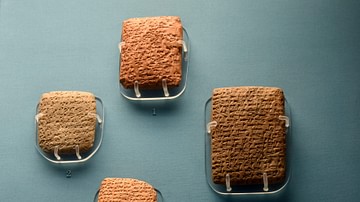

However, adjustments needed to be made since a lunar month is 29 days and 12+ hours, which does not exactly correlate with a solar year, which is 365 and a quarter days (actually 365 days, 5 hours, 48 minutes, and 47.8 seconds). The zodiac was another invention used to measure yearly time. This interest in measuring long periods of time led the Sumerians to develop a complicated knowledge of astronomy. Through careful observation of celestial patterns, they divided a year into 12 months according to the cycles of the moon. Similarly, agriculture required more than irrigation techniques, so the Sumerians invented calendars. State-building demanded an efficient system for measuring long periods of time. The scribes and scholars of ancient Mesopotamia played a seminal role in transmitting knowledge and disseminating ideas.Īstrology: All this record-keeping and administration required much more than the ability to calculate and record day-to-day transactions. Once schooling was complete, scribes were employed for a multitude of reasons: by the government, business owners, the royal court of a king, or even their friends and neighbors, but the highest role for a scribe was to become a priest, which during ancient times meant a person highly valued in society and not just held authority in religious matters but also held political importance. Next, students began the arduous task of transcribing lists consisting of signs, symbols, vocabulary, grammar, and sounds, followed by extensive training in linguistic translation, the number system, lexical text, and the role of a scribe within the community. There they were taught the style and structure of impressing wedge-shaped markings into clay by first copying short proverbs and simple textual passages. Young boys with social status and financial means could be sent to bit tuppi, or a “tablet house” school. Boys continued to farm their fathers’ fields, and girls were expected to raise children or take up the artisan craft of their mothers.Įducation was not extended to everyone, and the training needed to become a scribe was long and rigorous. Traditionally, ancient societies were structured so that children took up the trade of their parents. In fact, the role of a scribe in the ancient world was highly respected and not easily obtained. The Life of a Scribe: The term dubsar refers to an ancient Mesopotamian scribe, but in modern terminology the people who wrote, recorded, and transcribed the written word would be called linguists, historiographers, artists, revisionists, instructors, and reporters.
#Mesopotamia scribe plus
The journey to obtain the obsidian could take up to three months, so before the trader left, a promissory note was made by imprinting the symbol of grain plus the amount taken with another register, identifying the amount of obsidian glass the trader would exchange for the grain. Depending on the need or intended use for the glass, an artist could use it in jewelry, a builder could use it to carve intricate details, or a physician could use it to perform surgeries. Once the trader returned home, the glass was distributed through either a marketplace or personal transactions. From there, grain could be traded for the obsidian glass, which became available through either mining or local trade networks. Along the way, a bartering system allowed the trader to distribute grain or other valuable commodities in exchange for food and lodging until reaching the foothills of Hasan Dağ. A trader would most likely gather up a local commodity, such as stored grain from Lagash, and travel north beyond Kanya, to Çatalhöyük, in the hopes of trading one commodity for another.

Communities local to this resource had an advantage in the trading industry because many other regions wanted to obtain the valuable glass that was cut from the hardened volcanic lava. Obsidian glass from the upper Anatolian region was a hot commodity to regions that did not have volcanic activity.

Using obsidian glass as an example, we can trace the development of a commodity to a luxury item through travel and trade networks. Specialization occurs in an advanced agricultural society when staple crops experience high yields and grain stores can adequately feed the community, thus freeing people up to develop trades in specific areas: either in commodities, services, or luxury goods. As Sumerians developed city-states and defined the borders of kingship towns, agriculture and industry increased to the point of specialization.


 0 kommentar(er)
0 kommentar(er)
